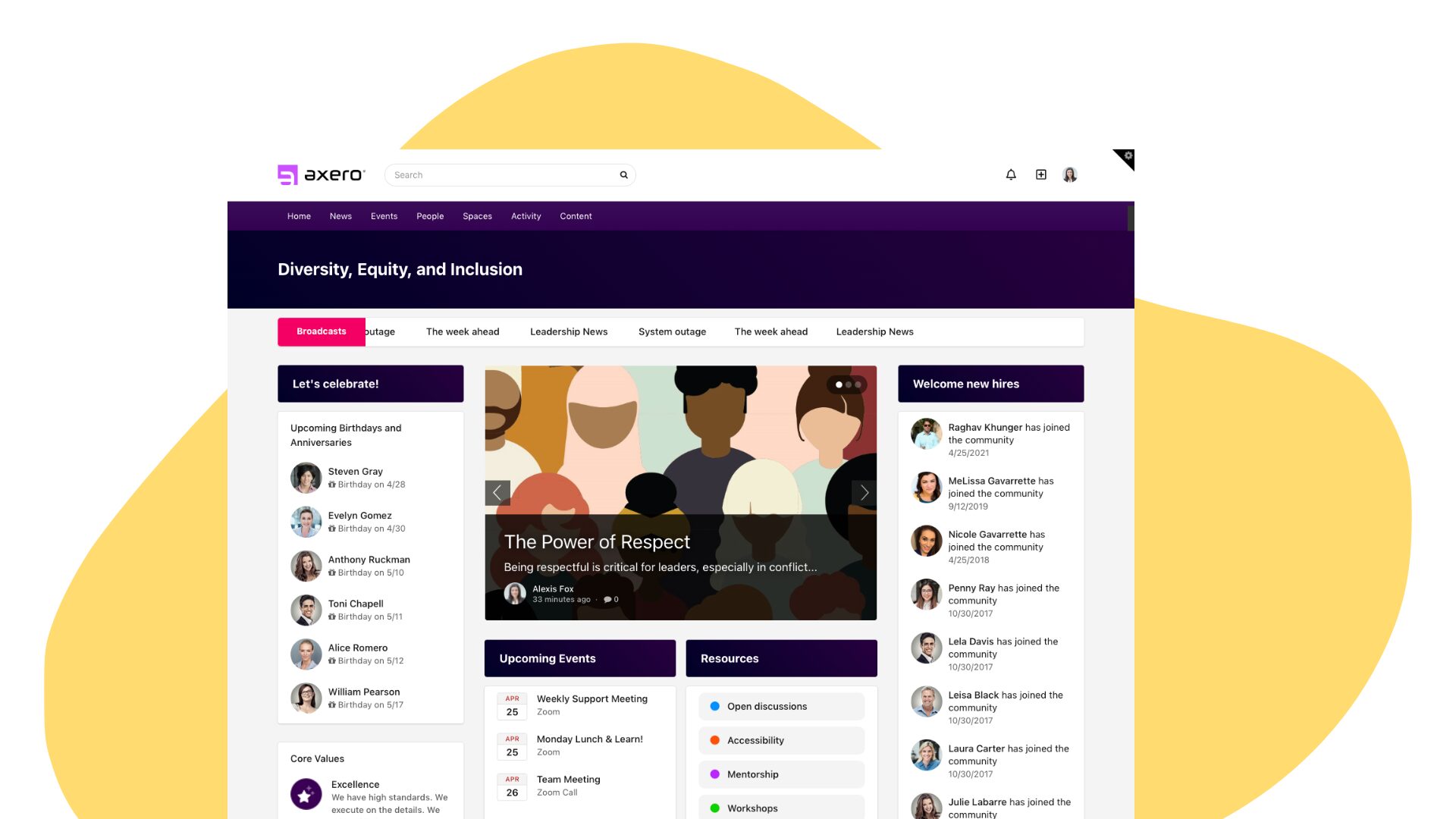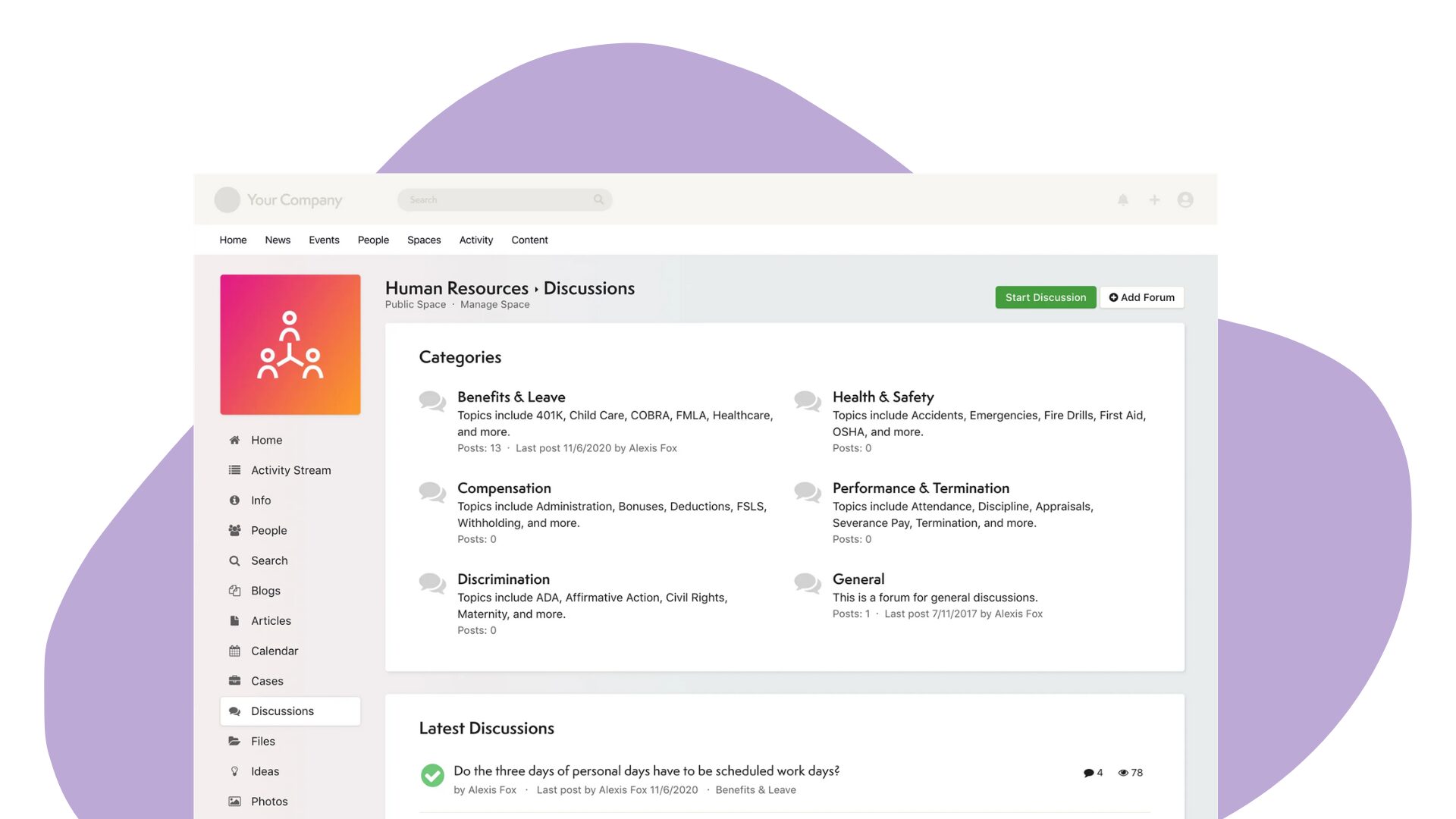Are you searching for SharePoint and Yammer alternatives? With so many collaboration tools available, finding the right one for your business can be overwhelming. There are so many alternatives to Yammer and SharePoint out there, so to help you make an informed decision, we’ve compared the top alternatives, highlighting their features, pros, and cons.
Even with the acquisition of Yammer by Microsoft for a whopping $1.2B, and the more recent ability to “bolt-on” Yammer’s micro-blogging functionality to SharePoint, people still come to us desperate for an alternative to SharePoint.
Worse still, for all the people looking for an alternative, there must be an equal number of people turned off from social business altogether, because of their experience with SharePoint or Yammer, imagining it is somehow representative of what is possible (and accessible) from social collaboration and intranet software.
It’s worth spending a few minutes explaining different approaches to social collaboration to understand that you do have a choice.
If you’re looking for a SharePoint alternative or the best Yammer alternatives, consider Axero and its flexible model.
1. Axero
Why Choose Axero as your SharePoint and Yammer alternative? Axero offers profound flexibility and customization, making it a standout Yammer alternative. Unlike the rigid, one-size-fits-all approach of Yammer, Axero adapts to your unique business needs.
Key Features:
- Customizable Intranet: Tailor your intranet with ease using our user-friendly interface.
- Single-Tenant System: Ensures your data is secure and customization is straightforward.
- Comprehensive Integration: Seamlessly integrates with other tools your business uses.
- Robust Collaboration Tools: Enhance internal communication and employee engagement.
Pros:
- Highly flexible and customizable
- Strong focus on user experience
- Excellent customer support
- Secure and reliable
Cons:
- May require initial setup time for customizations
2. Microsoft Teams
Why Microsoft Teams could be a good Yammer and SharePoint alternative? Microsoft Teams is a powerful collaboration tool integrated with the Microsoft 365 suite, making it a strong contender for businesses already using Microsoft products.
Key Features:
- Real-Time Collaboration: Includes chat, video conferencing, and file sharing.
- Integration with Microsoft Office: Seamlessly works with Word, Excel, and other Office tools.
- Robust Security: Built with enterprise-level security features.
Pros:
- Strong integration with Microsoft Office
- Reliable and secure
- Excellent for team collaboration
Cons:
- Can be overwhelming with too many notifications
- Requires a Microsoft 365 subscription
3. Google Workspace (formerly G-suite)
Why Consider Google Workspace as your Yammer alternative? Google Workspace is a suite of productivity tools designed for seamless collaboration and communication. It is an ideal solution for small businesses looking for an all-in-one platform.
Key Features:
- Real-Time Collaboration: Work together on documents, spreadsheets, and presentations.
- Cloud-Based Storage: Access your files from anywhere.
- Integrated Tools: Includes Gmail, Google Meet, Google Drive, and more.
- User-Friendly Interface: Offers an intuitive user interface that is easy for employees to navigate and use efficiently.
Pros:
- User-friendly interface
- Excellent collaboration features
- Strong integration with Google services
Cons:
- Limited storage on lower-tier plans
- Fewer third-party integrations compared to competitors
4. Slack
Why Choose Slack? Slack is one of the most popular messaging apps for businesses, known for its real-time communication capabilities. A favourite in its space and a potentially good SharePoint and Yammer alternative.
Key Features:
- Organized Channels: Keep conversations organized by topic.
- Searchable History: Easily find past conversations and files.
- Integrations: Connects with many other tools and services.
Pros:
- User-friendly and intuitive
- Great for team collaboration
- Strong third-party integrations
Cons:
- Can generate too many notifications
- Requires a strong internet connection for optimal performance
5. Workplace from Meta
Why Workplace from Meta could be your SharePoint or Yammer alternative? Workplace from Meta offers a familiar interface for Facebook users, making it easy to adopt.
Key Features:
- News Feed and Groups: Keep everyone informed and engaged with important announcements.
- Live Video Streaming: Host live events and meetings.
- Integrated Chat: Real-time messaging for quick communication.
Pros:
- Familiar interface for Facebook users
- Good for community engagement
- Robust communication features
Cons:
- Can be overwhelming with notifications
- Limited customization options
- Limited lifespan with sunset in 2026
Why Axero Stands Out
Community Engagement and Social Networking
Axero, like other top SharePoint and Yammer alternatives, excels in increasing community engagement and social networking within your organization. With Axero, you can build a vibrant social network that encourages collaboration and communication among employees.
Internal Communication and Employee Engagement
Effective internal communication and employee engagement are crucial for any business. Axero offers robust tools to facilitate internal communications, ensuring that all employees are on the same page and engaged with company goals.
Collaboration Tools and Team Collaboration
Axero provides a comprehensive suite of collaboration tools designed to enhance team collaboration. Whether it’s through chat, video chat, or file sharing, Axero makes it easy for teams to connect and collaborate.
Integrations with Third-Party Tools
Axero supports seamless integrations with third-party tools, making it a versatile choice for businesses that rely on a variety of software solutions. This ensures that all the tools you need are available on a single platform.
Data Security and Private Communication
Security is a top priority for Axero. With a single-tenant system, your data is kept secure, and private communication channels are protected from unauthorized access.
Microsoft Viva Engage and Other Alternatives
Axero is a strong alternative to Microsoft Viva Engage. While Viva Engage focuses on community engagement and internal communication, Axero offers a more flexible and customizable platform. This makes it easier to meet all the needs of your organization.
Project Management and Analytics
Axero also includes robust project management tools and analytics features, allowing you to track project progress and analyze team performance. This gives you the ability to make data-driven decisions and optimize your internal processes.
Enterprise Social Network and Collaboration
Axero functions as a comprehensive enterprise social network, providing a single platform for all your collaboration needs. This is particularly useful for companies with many employees spread across different locations, as it allows for seamless communication and collaboration.
Ready to Transform Your Internal Communications
Choosing the right collaboration tool for your business depends on your specific needs and preferences. Axero stands out as a versatile and customizable alternative to SharePoint and Yammer, offering a tailored approach to meet your unique business requirements. Whether you prioritize flexibility, integration, or user experience, there’s an alternative that’s right for you.
Take the First Step: Enhance your company’s internal communication and collaboration with a free consultation from Axero. Contact us today, with Axero, organizations can create a supportive environment that encourages autonomy, boosts productivity, and improves your internal communications.













 info@axerosolutions.com
info@axerosolutions.com 1-855-AXERO-55
1-855-AXERO-55


